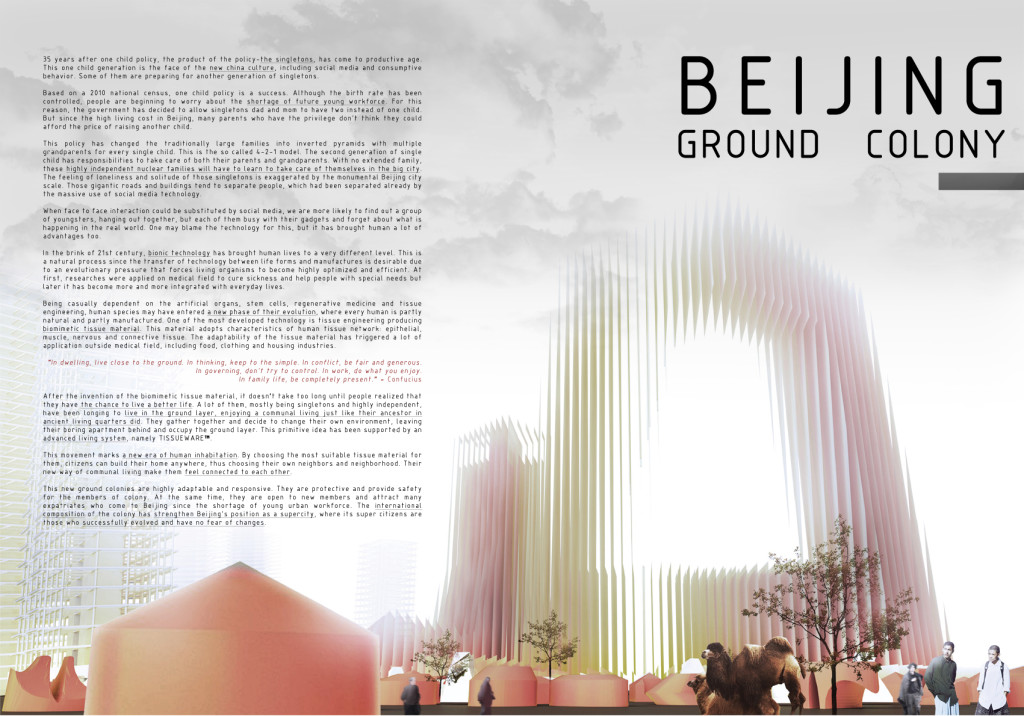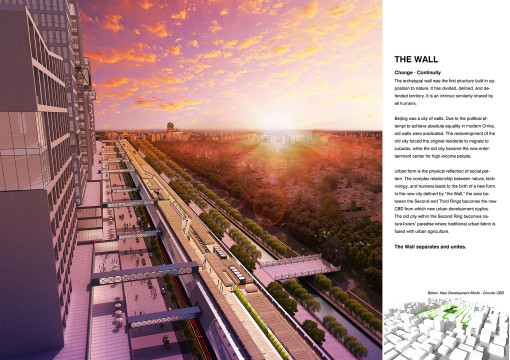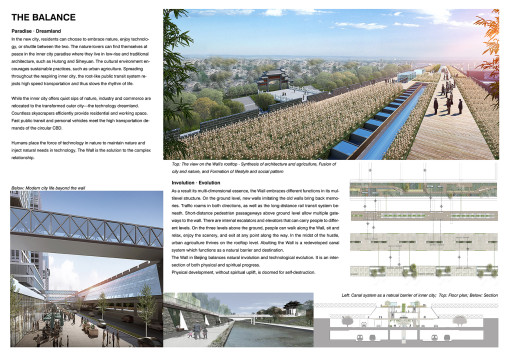Info:
Title: The Wall - Code: 57a82Contest: Beijing / 2014
By: Yuan Gao - Shannon Bassett - Xiaodong Lu
Views: 4349 Likes: 5
Votes:
Greg Lynn 9 Ai Weiwei 15 Sou Fujimoto 3 Eric de Broches des Combes 47.8
The Wall
Wall, the first structure against nature that humans built naturally, has divided, defined, and defended territory. It is an intrinsic similarity shared by all humans. In traditional Chinese architecture and urban planning, a predominant culture of wall was practiced. Walls outlined social hierarchy and facilitated political management. Spatial organization of enclosed units with different scales reflected the Chinese cultural gene of rigid social structure. Beijing was a city of walls. Due to the political attempt to achieve absolute equality in modern China, its old walls were eradicated. However, new social orders based on “danwei” –the concept of a work unit–were formed, creating impermeable blocks, building impersonal roads, and demolishing public space. The redevelopment forced the original residents to migrate to suburbs, while the old city became the new entertainment center for high-income people. Urban form is the physical reflection of a social pattern. The ingrained cultural gene demands a new wall to redefine the currently ineffective CBD. In the new city defined by “the Wall,” the boundary between nature and technology is delineated at Beijing’s Second Ring. Humans can choose to embrace nature, enjoy technology, or shuttle between the two. The old city within the Second Ring becomes the paradise for nature-lovers. Traditional urban fabric is fused with urban agriculture which serves as a sustainable food source. Spreading throughout the respiring inner city, the root-like public transit system rejects high speed transportation and thus slows the rhythm of life. Meanwhile, industry and commerce are relocated to the transformed outer city—the technology dreamland. Being the new CBD equipped with technology and linked by fast transit modes, the area between the Second and Third Rings leads the global city’s further development. The Wall separates and unites the two reflections of Beijing’s cultural, political, and economic importance. Due to the multi-dimensional essence, the Wall embraces different functions in its multilevel structure. On the ground level, new walls imitating the old walls bring back memories. Traffic roams in both directions, as well as the long-distance rail transit system beneath. Short-distance pedestrian passageways above ground level allow multiple gateways to the wall. There are internal escalators and elevators that can carry people to different levels. On the three levels above the ground, people can walk along the Wall, sit and relax, enjoy the scenery, and exit at any point along the way. In the midst of the hustle, urban agriculture thrives on the rooftop level. Abutting on the Wall is a redeveloped canal system functioning as a natural barrier and destination. The Wall in Beijing balances natural involution and technological evolution. It is an intersection of both physical and spiritual progress. Physical development, without spiritual uplift, is doomed for self-destruction.








